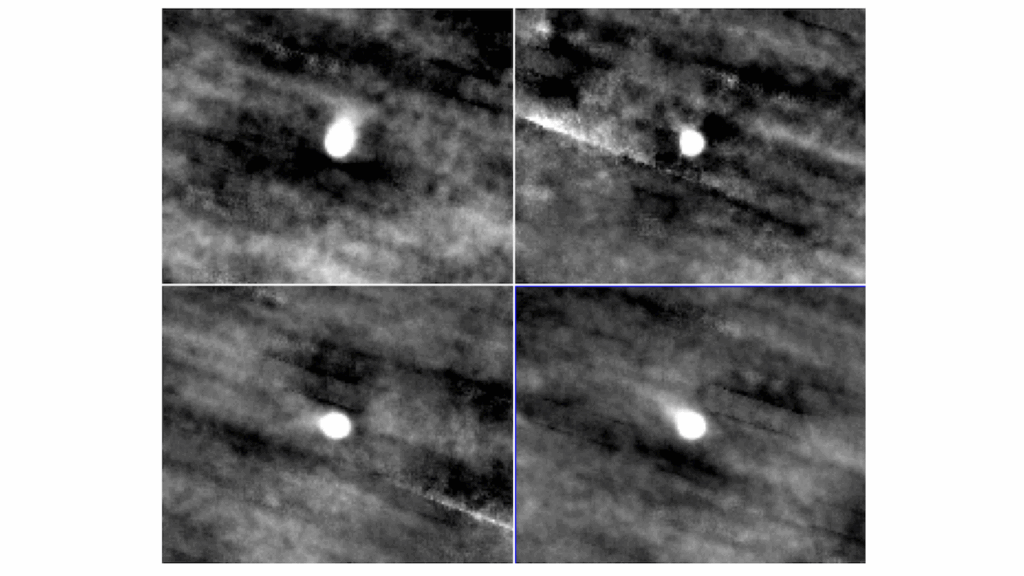A Water-Rich Atmosphere or Stellar Contamination for the Warm Super-Earth GJ~486b from JWST Observations

Planets orbiting M-dwarf stars are prime targets in the search for rocky exoplanet atmospheres. The small size of M dwarfs renders their planets exceptional targets for transmission spectroscopy, facilitating atmospheric characterization.
However, it remains unknown whether their host stars’ highly variable extreme-UV radiation environments allow atmospheres to persist. With JWST, we have begun to determine whether or not the most favorable rocky worlds orbiting M dwarfs have detectable atmospheres. Here, we present a 2.8-5.2 micron JWST NIRSpec/G395H transmission spectrum of the warm (700 K, 40.3x Earth’s insolation) super-Earth GJ 486b (1.3 R⊕ and 3.0 M⊕).
The measured spectrum from our two transits of GJ 486b deviates from a flat line at 2.2 – 3.3 σ, based on three independent reductions. Through a combination of forward and retrieval models, we determine that GJ 486b either has a water-rich atmosphere (with the most stringent constraint on the retrieved water abundance of H2O > 10% to 2σ) or the transmission spectrum is contaminated by water present in cool unocculted starspots.
We also find that the measured stellar spectrum is best fit by a stellar model with cool starspots and hot faculae. While both retrieval scenarios provide equal quality fits (χ2ν = 1.0) to our NIRSpec/G395H observations, shorter wavelength observations can break this degeneracy and reveal if GJ 486b sustains a water-rich atmosphere.
High Tide or Riptide on the Cosmic Shoreline? A Water-Rich Atmosphere or Stellar Contamination for the Warm Super-Earth GJ~486b from JWST Observations
Sarah E. Moran, Kevin B. Stevenson, David K. Sing, Ryan J. MacDonald, James Kirk, Jacob Lustig-Yaeger, Sarah Peacock, L. C. Mayorga, Katherine A. Bennett, Mercedes López-Morales, E. M. May, Zafar Rustamkulov, Jeff A. Valenti, Jéa I. Adams Redai, Munazza K. Alam, Natasha E. Batalha, Guangwei Fu, Junellie Gonzalez-Quiles, Alicia N. Highland, Ethan Kruse, Joshua D. Lothringer, Kevin N. Ortiz Ceballos, Kristin S. Sotzen, Hannah R. Wakeford
Comments: 18 pages, 7 figures, 5 tables. Accepted in ApJ Letters. Co-First Authors
Subjects: Earth and Planetary Astrophysics (astro-ph.EP); Solar and Stellar Astrophysics (astro-ph.SR)
Cite as: arXiv:2305.00868 [astro-ph.EP] (or arXiv:2305.00868v1 [astro-ph.EP] for this version)
Submission history
From: Sarah Moran
[v1] Mon, 1 May 2023 15:10:34 UTC (8,092 KB)
https://arxiv.org/abs/2305.00868
Astrobiology








